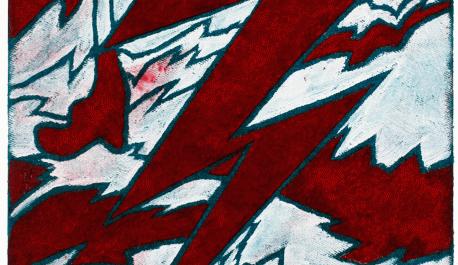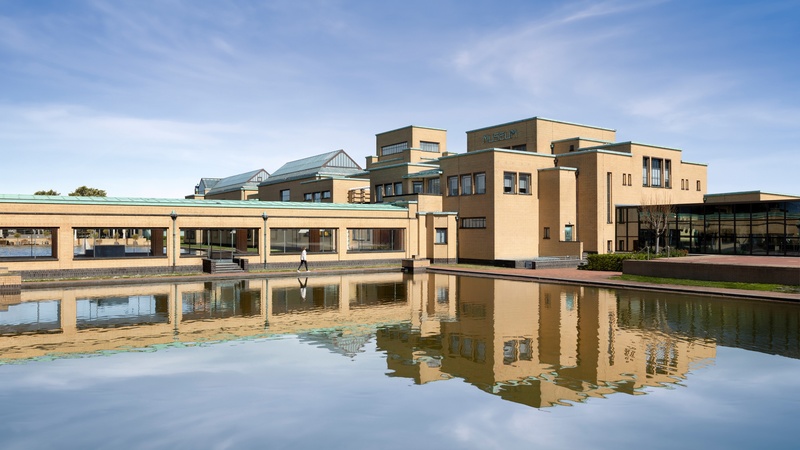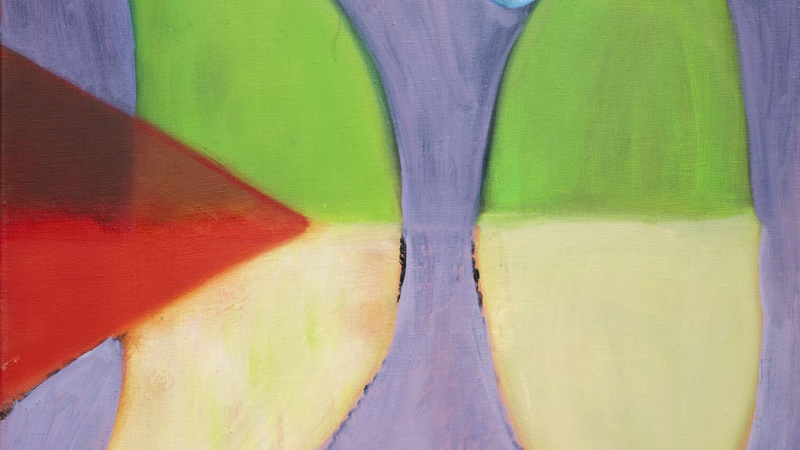Now or Never #3
Every two years Gemeentemuseum Den Haag shines the spotlight on artists who recently graduated from the Royal Academy of Art in The Hague. In keeping with this tradition, director Benno Tempel has selected 12 talented artists who graduated in 2014 or 2015. Their diverse and surprising work is showcased in Now or Never #3 at GEM.
Mickey Yang (b. 1988)
Killamangiro, 2015
The title of Mickey Yang’s graduation project plays on the name ‘Kilimanjaro’, the largest volcanic mountain in Tanzania. It was prompted by Yang’s fascination with the appearance and movement of molten lava, a substance that is both tantalizing and deadly. Yang expresses this contradiction in a range of tangible and intangible structures that she playfully arranges in the exhibition space. Made using a sometimes technically complex creation process, the work attempts to undermine existing personal meanings and open itself to new interpretations by the viewing public.
Martin Gabriel (b. 1991)
CGW, 2015
In his work Martin Gabriel explores the boundaries of the space in which we live. What is our living environment, and where does it end? We create our own reality every day, based on our thoughts, ideas and personal rules. This process occurs in a world shaped by humans that consists of infrastructure, buildings and cultivated nature. However, Gabriel identifies another reality that lies beyond the boundary of human consciousness: ‘The Native Reality’. A world we know as the subconscious, instinct or, in more concrete form, the cosmos. Gabriel attempts in his paintings and spatial interventions to capture this intangible reality in such a way that the viewer can sense its existence, even though he or she cannot touch it.
Vincent Both (b. 1991)
Untitled, 2015
Vincent Both produces drawings and paintings on paper, many of which are intensely reworked. He regards the emergence of an artwork as a ‘process of emanation’ (allowing that which is latent to flow out), whereby an intuitive inner search settles on the paper in the form of colours, lines and shapes. The work he produces – familiar and yet at the same time strange and peculiar – defies clear definition.
Juuke Schoorl (b. 1989)
Stretch, 2014
Juuke Schoorl’s aesthetic images challenge us to look at apparently self-evident things in a different way. The photo series Stretch explores the aesthetic possibilities of human skin. By manipulating the skin with cheap materials like nylon thread and adhesive tape, she shows that this amazing tissue is more than simply a protective cover for our organs. The film Liquid Skin delves into the fluid, sensual boundary between the physical world of the human body and the digital world.
Elise Sothys (b. 1989)
number eight, 2015
Elise Sothys’ powerful statements deconstruct concepts like power, sin, beauty and the sublime. Her light installations, films, works on paper and sculptures come from an inner urgency associated with the release of the spirit.
Jordan Herregraven (b. 1990)
Guilt Trip for Our Little Peanut, 2015
The sculptures, paintings and installations of Jordan Herregraven embody his quest to discover the essence of humankind. In this process, Jordan liberates his images from traditional symbolism and charges them with new meaning. They straddle the boundary between life and death, imagination and reality, reason and instinct.
Mirthe Klück (b. 1991)
Reality, 2014 – The Energy Between a Bone and a Bolt of Lightning, 2014 – Welcome Message, 2014
‘Mirthe Klück wonders what the reality of this world really is. As if she measures the reality content of the day using a thermometer. For example, as she cycles down a tree-lined avenue she asks herself: what if I am not cycling here? In that moment she tests a notion, briefly switches day and night, as it were.’1
Mirthe’s artistic practice is an ongoing investigation of material and perception. Creating in her paintings an environment closely related to computer games, she explores where the boundary lies between reality and fantasy, formalism and sentiment.
1 (From: Hanne Hagenaars, ‘Het idee dat ik David Bowie ben die naar de sauna gaat’ (‘The idea that I’m David Bowie going to the sauna’), 2015, www.mistermotley.nl
Lynne Brouwer (b. 1992)
Designs for Discomfort, 2014-2015
Where no one wants to be, few people go and many experience the most difficult moments of their life. How does one design such a space? In Designs for Discomfort photographer Lynne Brouwer explores the human tendency to control emotions through design. Abstract concepts like care, punishment, justice, resocialisation and grief, and our contemporary interpretation of them, appear to be impossible to capture. Yet they all manifest themselves physically in our society: an address, a location, an interior. Her catalogue encompasses 98 photographs taken in crematoria, funeral homes, prisons, psychiatric institutions, addiction clinics, police stations and courtrooms. These often colourful spaces raise questions like ‘what is good taste?’ and ‘is this a question of aesthetics or ethics?’.
Esther Hovers (b. 1991)
False Positives, 2015
A person who has been waiting a long time, a group that suddenly disintegrates, a woman who stops exactly at the corner of the street, a man who sprints before a slowly moving crowd: these are all forms of behaviour in public spaces that can be classified as odd. But what is normal behaviour? Most European cities now have intelligent surveillance systems for security purposes that use such classifications to flag up odd behaviour in public spaces. Before the camera, everyone is suspicious and every person a potential offender. Does this type of observation actually guarantee our safety?
Bjorn Barendse (1991)
The Culture, the Money and the People, 2013-2015
Bjorn believes that a fabulous existence is reserved only for those who are able to laugh at themselves. Although his works are created individually, together they operate as one big work. His installations can be approached at an aesthetic, art-historical or sociopolitical level, and invite the viewer to make free associations. Why shouldn’t you sniff an artwork, or dance to it? Bjorn regards The Culture, the Money and the People mainly as a product of his time at the academy and the space it occupies.
Rixt de Boer (b. 1992)
Fân, 2014-2015
In Fân Rixt de Boer focuses on the haystack and its dominance of the Transylvanian landscape, observing the relationship between object and collective memory. Although haymaking techniques are changing all over the world, the haystack is an ancient and stable factor in the Romanian countryside. It is the hub of farm life. The videos emphasise various dual connections, such as the relationship between object and landscape, man and nature and history and custom.
Olya Oleinic (b. 1991)
Universal Guide to Everything, 2014
For months, Olya Oleinic collected the most-googled ‘How to [….]’ searches and put together a unique image for each of them, complete with instructions. The result is a collection of images that represents an endless source of information and a desire to improve our lives. In reality, the images overwhelm
us with superfluous knowledge and challenge our ability to control our own lives. How to lose weight. How to care for orchids. How to read palms. The motto is: don't wait any longer. There’s no room for doubt. Make your dreams come true. Do things you never thought you would.


